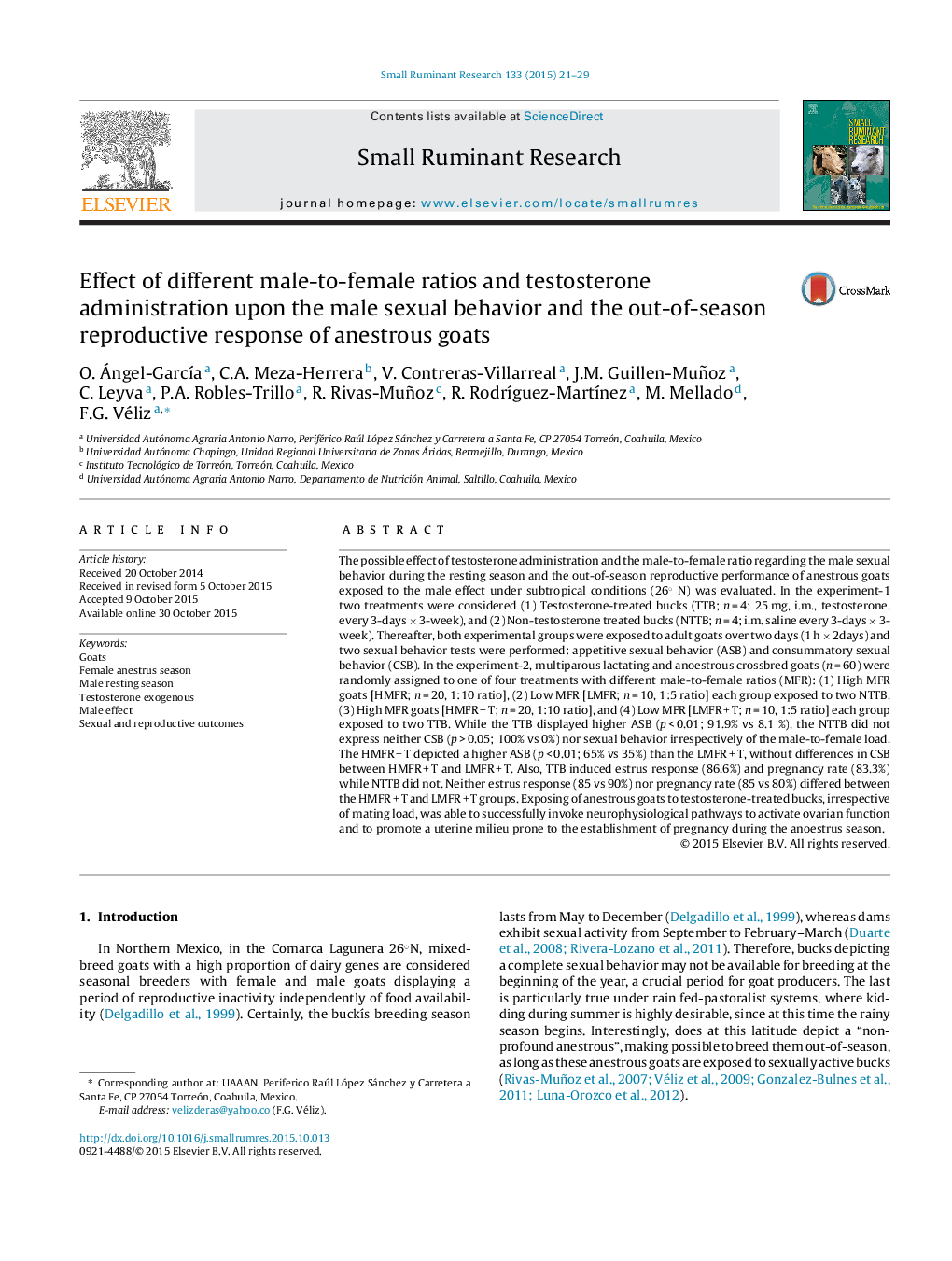| کد مقاله | کد نشریه | سال انتشار | مقاله انگلیسی | نسخه تمام متن |
|---|---|---|---|---|
| 2456816 | 1554359 | 2015 | 9 صفحه PDF | دانلود رایگان |
• Testosterone quickly elicited a high sex drive with a full repertoire of sexual behaviors, promoting.
• An enhancement not only in the appetitive but also in the consummatory sexual behaviors.
• An increased goat́s sexual activity while triggered an anticipated onset in the ovarian function.
• Such induction and synchronized estrous behavior occurred regardless the male-to-female ratio.
• Results are key to design out-of-season reproductive strategies under marginal production systems.
The possible effect of testosterone administration and the male-to-female ratio regarding the male sexual behavior during the resting season and the out-of-season reproductive performance of anestrous goats exposed to the male effect under subtropical conditions (26° N) was evaluated. In the experiment-1 two treatments were considered (1) Testosterone-treated bucks (TTB; n = 4; 25 mg, i.m., testosterone, every 3-days × 3-week), and (2) Non-testosterone treated bucks (NTTB; n = 4; i.m. saline every 3-days × 3-week). Thereafter, both experimental groups were exposed to adult goats over two days (1 h × 2days) and two sexual behavior tests were performed: appetitive sexual behavior (ASB) and consummatory sexual behavior (CSB). In the experiment-2, multiparous lactating and anoestrous crossbred goats (n = 60) were randomly assigned to one of four treatments with different male-to-female ratios (MFR): (1) High MFR goats [HMFR; n = 20, 1:10 ratio], (2) Low MFR [LMFR; n = 10, 1:5 ratio] each group exposed to two NTTB, (3) High MFR goats [HMFR + T; n = 20, 1:10 ratio], and (4) Low MFR [LMFR + T; n = 10, 1:5 ratio] each group exposed to two TTB. While the TTB displayed higher ASB (p < 0.01; 91.9% vs 8.1 %), the NTTB did not express neither CSB (p > 0.05; 100% vs 0%) nor sexual behavior irrespectively of the male-to-female load. The HMFR + T depicted a higher ASB (p < 0.01; 65% vs 35%) than the LMFR + T, without differences in CSB between HMFR + T and LMFR + T. Also, TTB induced estrus response (86.6%) and pregnancy rate (83.3%) while NTTB did not. Neither estrus response (85 vs 90%) nor pregnancy rate (85 vs 80%) differed between the HMFR + T and LMFR + T groups. Exposing of anestrous goats to testosterone-treated bucks, irrespective of mating load, was able to successfully invoke neurophysiological pathways to activate ovarian function and to promote a uterine milieu prone to the establishment of pregnancy during the anoestrus season.
Journal: Small Ruminant Research - Volume 133, December 2015, Pages 21–29
